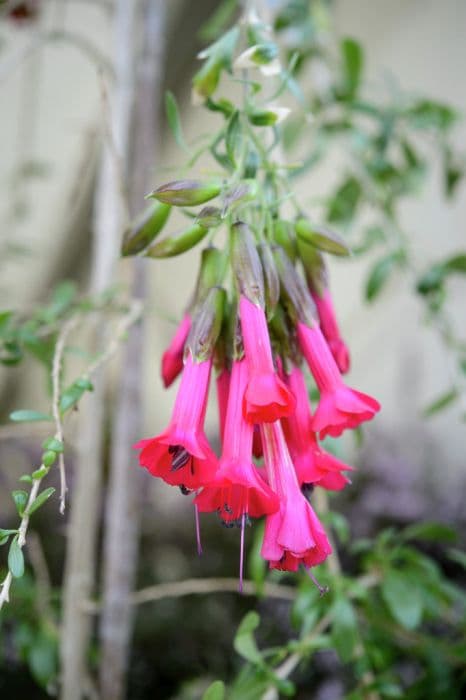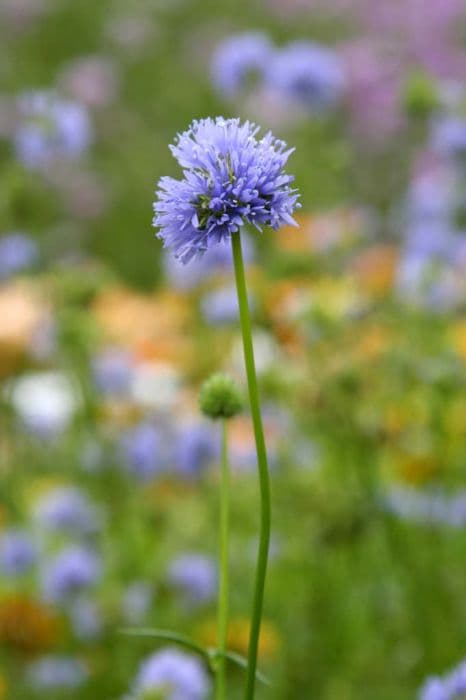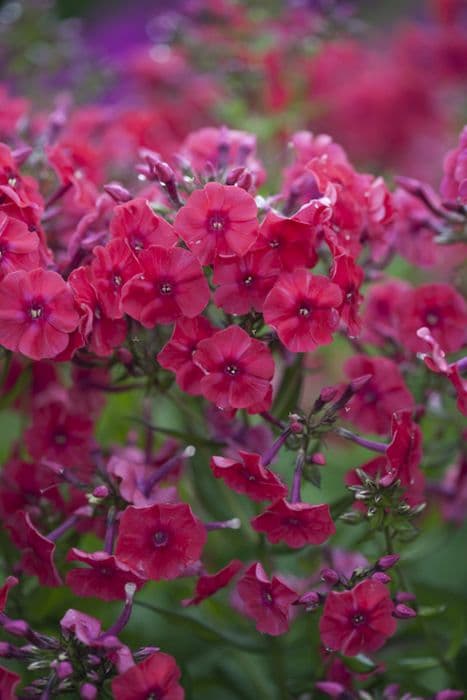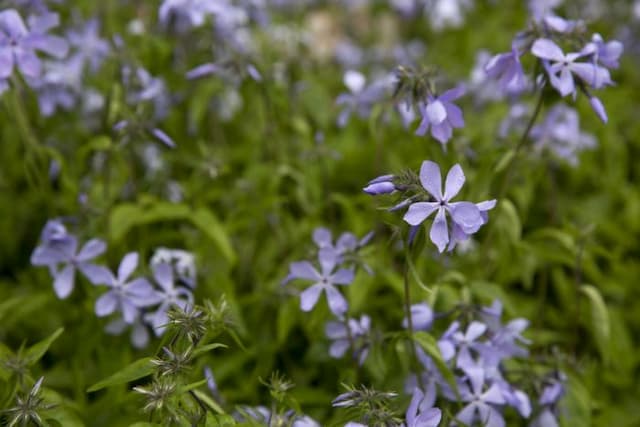Douglas moss phlox Phlox douglasii 'Crackerjack'

ABOUT
Phlox douglasii 'Crackerjack' is a striking plant known for its profusion of vibrant blooms. The flowers come in a beautiful shade of intense pink, with each petal exhibiting a rounded form that creates a harmonious floral display. At the center of the blossom, a deeper hue may be noticed, providing a delightful contrast that highlights the starry eye of the flower. The foliage provides a lush backdrop to these blooms, with needle-like leaves densely packed along the stems, offering a textured appearance with their fine structure. The leaves boast a rich green color that stays consistent throughout the growing season, making a lovely contrast against the brightness of the flowers. Overall, Crackerjack presents itself as a low-growing, mat-forming selection, with blooms that cover the greenery in a radiant quilt of color, inviting admiration and offering a splendid spectacle in any garden setting.
About this plant
 Names
NamesSynonyms
Douglas's Phlox, Crackerjack Phlox, Moss Phlox.
Common names
Phlox douglasii 'Crackerjack'.
 Toxicity
ToxicityTo humans
The Phlox is generally not considered toxic to humans. However, consuming any plant material could potentially result in discomfort due to the plant's cell structure or natural compounds, which may not agree with human digestion. If a reaction does occur, it could involve gastrointestinal distress such as nausea, vomiting, or diarrhea. Always exercise caution and avoid eating plants that are not known and confirmed to be edible.
To pets
Phlox is typically not regarded as a toxic plant to pets. Nonetheless, it is always a good practice to prevent pets from ingesting plants, as they could cause gastrointestinal upset or an allergic reaction in some animals. Signs of a possible reaction after ingestion could include vomiting, diarrhea, or drooling. If you suspect your pet has eaten a substantial amount of phlox, it's best to consult your veterinarian.
 Characteristics
CharacteristicsLife cycle
Perennials
Foliage type
Evergreen
Color of leaves
Green
Flower color
Pink
Height
0.5 feet (15 cm)
Spread
1 feet (30 cm)
Plant type
Herb
Hardiness zones
5
Native area
North America
Benefits
 General Benefits
General Benefits- Low Maintenance: Requires minimal upkeep once established.
- Drought Tolerant: Able to thrive with minimal water, ideal for arid and water-conscious gardens.
- Ground Cover: Spreads to form a dense mat that suppresses weeds and covers bare spots in the garden.
- Attracts Pollinators: Invites beneficial insects like bees and butterflies to the garden, promoting pollination.
- Vibrant Blooms: Adds a splash of color with its flowers, enhancing visual interest in the landscape.
- Hardy Plant: Tolerates a range of temperatures and soil conditions, making it versatile for various gardens.
- Long Blooming: Flowers for an extended period, usually from spring to summer, providing lasting beauty.
- Evergreen: Retains foliage throughout the year, contributing to the winter garden's visual interest.
- Compact Size: Ideal for rock gardens, borders, and small spaces due to its compact and neat growth habit.
- Deer Resistant: Less palatable to deer, reducing the likelihood of damage to the plant.
 Medical Properties
Medical PropertiesThis plant is not used for medical purposes.
 Air-purifying Qualities
Air-purifying QualitiesThis plant is not specifically known for air purifying qualities.
 Other Uses
Other Uses- Phlox douglasii 'Crackerjack' can be used as a natural dye source for fabrics, producing varied shades of pink depending on the mordant used.
- This plant's mat-forming growth habit makes it a suitable living mulch in gardens, which can help to suppress weeds and conserve soil moisture.
- The dense foliage of the Phlox douglasii 'Crackerjack' can serve as a protective cover for beneficial garden insects, providing them with a habitat.
- Its vivid flowers provide an aesthetic enhancement for rock gardens, crevices and stone walls, thriving in small spaces and adding vibrant color.
- Due to its low-growing nature, Phlox douglasii 'Crackerjack' can be utilized for xeriscaping, helping to conserve water in landscaping.
- Phlox douglasii 'Crackerjack' can be used in sensory gardens for its texture and gentle fragrance, which can be enjoyable when touched or brushed against.
- The plant's tolerance to drought makes it a good candidate for use in green roofs, where it can contribute to the roof's insulation and stormwater management.
- Dried Phlox douglasii 'Crackerjack' flowers can be incorporated into potpourri mixes, adding color and a mild fragrance to the blend.
- The tight growth form and drought resistance of Phlox douglasii 'Crackerjack' make it an effective ground cover for preventing soil erosion on slopes.
- Phlox douglasii 'Crackerjack' can play a role in educational gardens, teaching about native plants and low-maintenance gardening practices.
Interesting Facts
 Feng Shui
Feng ShuiThe Creeping Phlox is not used in Feng Shui practice.
 Zodiac Sign Compitability
Zodiac Sign CompitabilityThe Creeping Phlox is not used in astrology practice.
 Plant Symbolism
Plant Symbolism- Harmony: Phlox douglasii 'Crackerjack', commonly known as Douglas's phlox, often symbolizes harmony due to its clusters of flowers that create a sense of unity and balance.
- Unity: The way the flowers of Douglas's phlox grow closely together represents unity, making it a symbol for people coming together in solidarity or friendship.
- Agreement: The consistent color and shape of the blooms are seen as a symbol of agreement, reflecting a uniformity in thoughts or actions.
- New Beginnings: With its growth patterns and blooming season, Douglas's phlox is often associated with new beginnings or starting afresh.
- Proposal of Love: In the language of flowers, phlox can signify a proposal or offer of love, with Douglas's phlox aligning to subtle and sweet gestures.
 Water
WaterCreeping Phlox requires moderate watering, especially during its active growth in spring and early summer. It should be watered deeply, ensuring the water penetrates the root zone, approximately once a week with about one inch of water. During hot and dry periods, increase watering frequency to twice a week, but always check the soil moisture before watering to avoid overwatering. Reduce watering in the fall and winter when the plant is dormant. It's essential not to let the soil become waterlogged, as Creeping Phlox does not like standing water.
 Light
LightCreeping Phlox thrives in full sun to partial shade. It performs best when it receives at least six hours of direct sunlight daily. An ideal location for this plant would be in a spot that gets morning sunlight and some afternoon shade, especially in regions with very hot summers, to protect the flowers from scorching.
 Temperature
TemperatureCreeping Phlox is hardy and can withstand a wide temperature range. It can survive minimum winter temperatures down to about -30 degrees Fahrenheit and is comfortable up to summer highs around 80 degrees Fahrenheit. The ideal growth temperature for Creeping Phlox is between 60 and 75 degrees Fahrenheit, ensuring healthy growth and flowering.
 Pruning
PruningPruning is beneficial for Creeping Phlox to encourage bushier growth and more abundant blooms. It should be lightly pruned after flowering to maintain its shape and remove any dead or damaged stems. The best time for pruning is late spring or early summer, after the blooms have faded.
 Cleaning
CleaningAs needed
 Soil
SoilDouglas moss phlox thrives in a well-draining soil mix with sandy or gravelly components, mimicking its native alpine habitat. A mix of 1 part potting soil, 1 part sand, and 1 part perlite will provide the drainage and aeration Crackerjack needs. The optimal soil pH for Douglas moss phlox is slightly alkaline to neutral, ranging from pH 6.0 to 8.0.
 Repotting
RepottingDouglas moss phlox, or Crackerjack, does not require frequent repotting and can often remain in the same pot for several years. It should only be repotted if the plant has outgrown its current container or if the soil has degraded and needs refreshing. Repotting every 2-3 years is typically sufficient for maintaining the health of the plant.
 Humidity & Misting
Humidity & MistingDouglas moss phlox 'Crackerjack' prefers a dry to moderate humidity level, making it well-suited for typical indoor environments. It is adapted to thrive in outdoor conditions where the humidity is not consistently high. Avoid excessive humidity to prevent mold and fungal issues.
 Suitable locations
Suitable locationsIndoor
Ensure bright light, good air flow, and rocky soil for Douglas moss phlox.
Outdoor
Place in full sun and well-draining gritty soil for Douglas moss phlox.
Hardiness zone
5-9 USDA
 Life cycle
Life cyclePhlox douglasii 'Crackerjack', commonly known as Douglas Moss Phlox, begins its life cycle when seeds germinate, typically in spring when soil temperatures warm sufficiently. After germination, seedlings develop into small rosettes, with leaves growing in dense, needle-like clusters. The vegetative stage follows, during which the plant establishes a strong root system and vegetative growth expands in preparation for flowering. Flowering usually occurs from late spring to early summer, presenting a vibrant display of pink to purple flowers that attract pollinators. After pollination, the plant sets seed, which disperses near the parent plant or further afield by wind or animal vectors. As winter approaches, the plant may enter a period of dormancy, reducing above-ground activity, but it will resume growth the following spring, completing the annual cycle.
 Propogation
PropogationPropogation time
Spring-Early Summer
Phlox douglasii 'Crackerjack', commonly known as Creeping Phlox, is often propagated by cuttings, a method that encourages fast and effective establishment of new plants. The best time to take cuttings for propagation is in late spring or early summer when the plant is actively growing. To propagate Creeping Phlox by cuttings, select a healthy, non-flowering stem and cut a 4-6 inch (10-15 cm) piece just below a node, where leaves are attached. Remove the leaves from the lower half of the cutting to minimize moisture loss and dip the cut end into a rooting hormone to encourage root growth. The cutting should then be planted in a well-draining soil mix, keeping it moist until roots have developed. New growth will usually indicate that roots have formed, after which the new Creeping Phlox plants can be transplanted to their final location in the garden.









